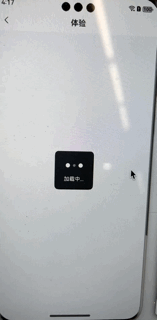样例
Signature:
plt.text(x: 'float',y: 'float',s: 'str',fontdict: 'dict[str, Any] | None' = None,**kwargs,
) -> 'Text'
Docstring:
Add text to the Axes.Add the text *s* to the Axes at location *x*, *y* in data coordinates,
with a default ``horizontalalignment`` on the ``left`` and
``verticalalignment`` at the ``baseline``. See
:doc:`/gallery/text_labels_and_annotations/text_alignment`.Parameters
----------
x, y : floatThe position to place the text. By default, this is in datacoordinates. The coordinate system can be changed using the*transform* parameter.s : strThe text.fontdict : dict, default: None.. admonition:: DiscouragedThe use of *fontdict* is discouraged. Parameters should be passed asindividual keyword arguments or using dictionary-unpacking``text(..., **fontdict)``.A dictionary to override the default text properties. If fontdictis None, the defaults are determined by `.rcParams`.Returns
-------
`.Text`The created `.Text` instance.Other Parameters
----------------
**kwargs : `~matplotlib.text.Text` properties.Other miscellaneous text parameters.Properties:agg_filter: a filter function, which takes a (m, n, 3) float array and a dpi value, and returns a (m, n, 3) array and two offsets from the bottom left corner of the imagealpha: scalar or Noneanimated: boolantialiased: boolbackgroundcolor: :mpltype:`color`bbox: dict with properties for `.patches.FancyBboxPatch`clip_box: unknownclip_on: unknownclip_path: unknowncolor or c: :mpltype:`color`figure: `~matplotlib.figure.Figure`fontfamily or family or fontname: {FONTNAME, 'serif', 'sans-serif', 'cursive', 'fantasy', 'monospace'}fontproperties or font or font_properties: `.font_manager.FontProperties` or `str` or `pathlib.Path`fontsize or size: float or {'xx-small', 'x-small', 'small', 'medium', 'large', 'x-large', 'xx-large'}fontstretch or stretch: {a numeric value in range 0-1000, 'ultra-condensed', 'extra-condensed', 'condensed', 'semi-condensed', 'normal', 'semi-expanded', 'expanded', 'extra-expanded', 'ultra-expanded'}fontstyle or style: {'normal', 'italic', 'oblique'}fontvariant or variant: {'normal', 'small-caps'}fontweight or weight: {a numeric value in range 0-1000, 'ultralight', 'light', 'normal', 'regular', 'book', 'medium', 'roman', 'semibold', 'demibold', 'demi', 'bold', 'heavy', 'extra bold', 'black'}gid: strhorizontalalignment or ha: {'left', 'center', 'right'}in_layout: boollabel: objectlinespacing: float (multiple of font size)math_fontfamily: strmouseover: boolmultialignment or ma: {'left', 'right', 'center'}parse_math: boolpath_effects: list of `.AbstractPathEffect`picker: None or bool or float or callableposition: (float, float)rasterized: boolrotation: float or {'vertical', 'horizontal'}rotation_mode: {None, 'default', 'anchor'}sketch_params: (scale: float, length: float, randomness: float)snap: bool or Nonetext: objecttransform: `~matplotlib.transforms.Transform`transform_rotates_text: boolurl: strusetex: bool, default: :rc:`text.usetex`verticalalignment or va: {'baseline', 'bottom', 'center', 'center_baseline', 'top'}visible: boolwrap: boolx: floaty: floatzorder: floatNotes
-----.. note::This is the :ref:`pyplot wrapper <pyplot_interface>` for `.axes.Axes.text`.Examples
--------
Individual keyword arguments can be used to override any given
parameter::>>> text(x, y, s, fontsize=12)The default transform specifies that text is in data coords,
alternatively, you can specify text in axis coords ((0, 0) is
lower-left and (1, 1) is upper-right). The example below places
text in the center of the Axes::>>> text(0.5, 0.5, 'matplotlib', horizontalalignment='center',... verticalalignment='center', transform=ax.transAxes)You can put a rectangular box around the text instance (e.g., to
set a background color) by using the keyword *bbox*. *bbox* is
a dictionary of `~matplotlib.patches.Rectangle`
properties. For example::>>> text(x, y, s, bbox=dict(facecolor='red', alpha=0.5))
File: c:\users\26945\appdata\local\programs\python\python39\lib\site-packages\matplotlib\pyplot.py
Type: function
以下是对 plt.text 函数文档结构的梳理:
函数签名(Signature)
plt.text(x: 'float', y: 'float', s: 'str', fontdict: 'dict[str, Any] | None' = None, **kwargs) -> 'Text'
明确了函数的输入参数类型要求以及返回值类型,参数 x、y 应为浮点数类型,s 为字符串类型,fontdict 可为字典类型(默认值为 None),还有可变的关键字参数 **kwargs,返回值是 Text 类型的实例。
函数文档字符串(Docstring)概述
- 功能描述
说明了plt.text函数用于向坐标轴(Axes)添加文本,会将指定的文本s放置在以数据坐标表示的x、y位置处,默认水平对齐方式为left,垂直对齐方式为baseline,并提供了相关参考文档链接用于了解更多文本对齐的内容。
参数(Parameters)部分
x、y参数
详细介绍这两个参数用于指定放置文本的位置,默认采用数据坐标系统,也可通过transform参数改变坐标系统。s参数
指出其代表要添加的文本内容,类型为字符串。fontdict参数- 先是给出了不鼓励使用该参数的提示,建议将参数以单个关键字参数形式或者使用字典解包的方式传递。
- 然后说明该参数本质是一个字典,用于覆盖默认的文本属性,如果为
None,则默认文本属性由.rcParams确定。
返回值(Returns)部分
明确函数返回一个 .Text 实例,即创建的文本对象。
其他参数(Other Parameters,即 **kwargs)部分
- 整体说明
介绍了**kwargs可用于传递其他杂项的文本参数,这些参数用于进一步定制文本的各种属性。 - 具体属性列举
详细列出了众多可设置的文本属性,例如agg_filter、alpha、animated等等,对每个属性都有相应的简要说明,涵盖了从文本的外观样式(如颜色、字体、字号等)到交互相关特性(如鼠标悬停、是否可被拾取等)以及坐标变换、显示控制等多方面的属性设置内容。
注释(Notes)部分
强调此函数是 .axes.Axes.text 的 pyplot 包装器(pyplot wrapper),也就是说明它与面向对象绘图中的对应方法的关联。
示例(Examples)部分
- 通过单个关键字参数覆盖属性示例
展示了如何使用单个关键字参数(如fontsize)来覆盖特定的文本参数,如text(x, y, s, fontsize=12)。 - 改变坐标系统放置文本示例
给出了通过指定transform参数将文本放置在坐标轴坐标(transAxes)系统下的示例,以实现在坐标轴中心放置文本的效果,代码为text(0.5, 0.5, 'matplotlib', horizontalalignment='center', verticalalignment='center', transform=ax.transAxes)。 - 为文本添加背景框示例
演示了利用bbox参数给文本添加矩形背景框的用法,如text(x, y, s, bbox=dict(facecolor='red', alpha=0.5)),并说明了bbox是~matplotlib.patches.Rectangle属性的字典。
总体来看,文档对 plt.text 函数的功能、参数、返回值、使用注意事项以及常见用法示例都进行了较为全面详细的介绍,方便使用者准确理解和运用该函数进行文本添加及相关属性定制的操作。






